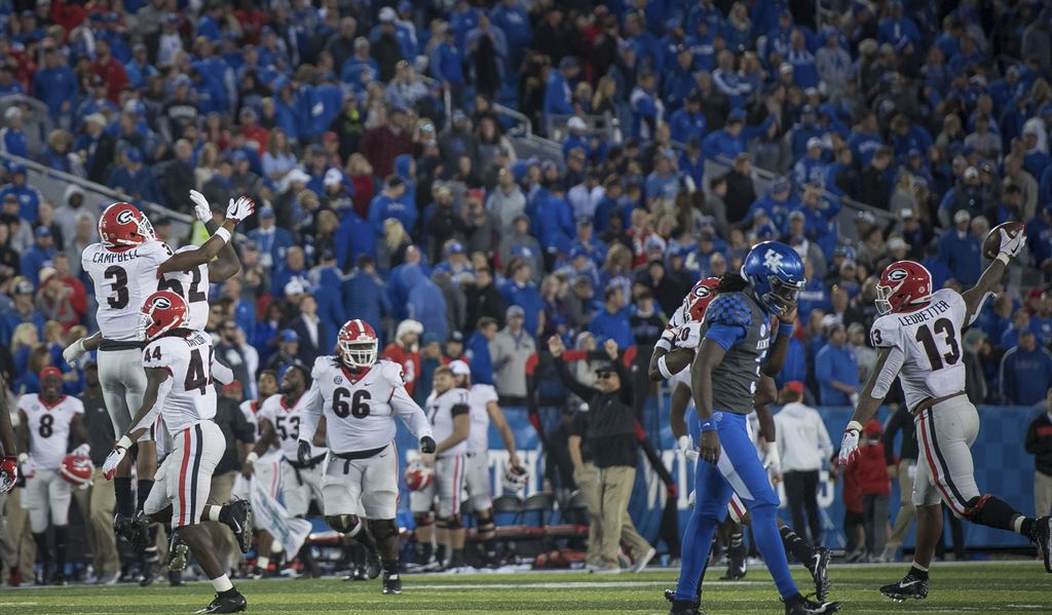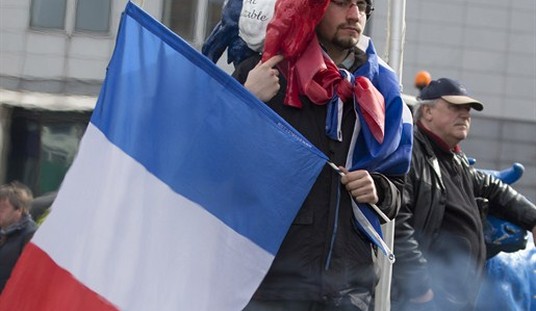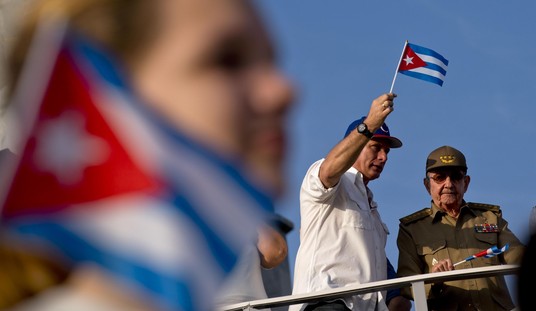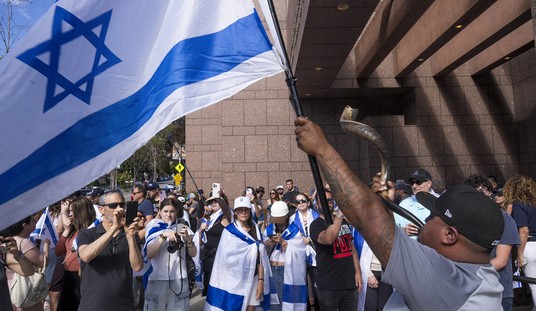This is a welcome surprise, and not one easily explained. Right, sure, most stadiums are open-air, which all but eliminates transmission in normal circumstances. But:
— Delta is much more contagious than the original SARS-CoV-2 was;
— fans are packed in pretty tight in those stands, right on top of each other;
— fans have to use the restrooms at some point and may party indoors before and/or after the game;
— vaccination rates are lower among young adults, many thousands of whom attend college games.
Based on all that, we’d expect an uptick in regional case counts now that the season is nearly three weeks old, which is plenty of time for transmission at games during week one to have produced a spate of confirmed cases. Instead we see this:

Every region has had cases per capita fall over the past week. The Daily Caller looked at college towns specifically to see if they’re trending upwards even if the rest of their particular state is trending downwards. Nope:
The biggest crowd in week one of college football was found in Ann Arbor, Michigan. More than 109,000 fans gathered in the “Big House” to watch the Michigan Wolverines defeat the Western Michigan Broncos. When the game was played on Sept. 4, the seven-day average of new COVID-19 cases in Washtenaw county, where Ann Arbor is located, was 81.
More than two weeks later, on Sept. 20, the average is 80…
In Texas, despite the University of Texas and Texas A&M both hosting games on Sept. 4 that drew nearly 190,000 fans between them, the statewide seven-day average of new cases is currently lower than it was on gameday, according to the Centers for Disease Control and Prevention (CDC). Cases in Travis County, home of the Longhorns, are down since Austin hosted more than 91,000 fans, and in A&M’s Brazos County, the growth rate of new cases in unchanged…
In Blacksburg, Virginia, the Virginia Tech Hokies hosted more than 65,000 fans on Friday night, Sept. 3 for a season-opening win against North Carolina. The growth rate of new COVID-19 cases in Montgomery County, Virginia, has slowed since the game took place.
Experts like Anthony Fauci and the wider media were nervous that the resumption of full houses on Saturday this fall would provide a banquet for the virus, particularly in states like Texas where the governor has barred vaccine passports and mask mandates. But there’s no evidence that games have seeded cases in meaningful numbers so far. What gives?
My guess is that it’s a combination of rising population immunity, warm weather, the outdoor setting, and vaccine mandates at some universities. Delta ran roughshod over the southeastern U.S. in July and August, possibly instilling enough natural immunity among locals — especially college-aged adults, who were probably less willing to forgo summer socializing in the name of staying safe — that there weren’t many vulnerable people left to infect by the time the season started. That is, maybe the experts who are predicting a steady slide in COVID cases through the winter are onto something and the safety of college football games is our first inkling of it. Delta may have gotten the country a lot closer to herd immunity already than we knew.
And not just by infecting people. Fear of the variant also caused a surge in vaccinations last month, further increasing population immunity. Although, interestingly, that’s begun to slow down now:
The seven-day average of daily first doses was about 272,000 by last Friday, according to the CDC, making it the slowest week of first-dose immunizations since mid-July. On Tuesday, fewer than 21,000 individuals were injected with their first shot, tentative figures from the CDC show, potentially making it the slowest day since Christmas.
This slowdown is partly because millions of Americans have been either fully or partially vaccinated. About 55 percent of Americans are fully vaccinated, while about 64 percent have received at least one dose of a coronavirus vaccine. But it also comes amid an unwelcome comeback of infections and deaths across the country, and as the United States falls behind in overall vaccination rates globally, despite having had a months-long head start in immunizing its population.
Did Biden’s federal vaccine mandate backfire by locking in resistance to getting immunized among some members of the “wait and see” group? Or did the falling case counts in regions like the southeast reduce the urgency among locals to get vaccinated?
Either way, as immunity rises among the population, games should only get safer — even if that immunity is coming from vaccination. Despite the mixed messaging from the CDC since July, the vaccinated still aren’t as contagious as the unvaccinated are.
Here’s Clay Travis on with Fox yesterday to point out that the doomsayers were wrong to worry about football games as viral spreaders. Okay, but Travis himself incorrectly speculated that the U.S. had reached herd immunity numerous times during the pandemic. Hopefully he’s right this time. Finally.







